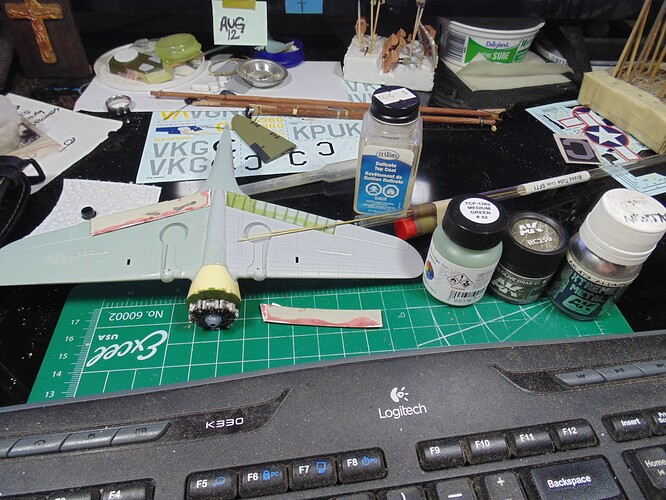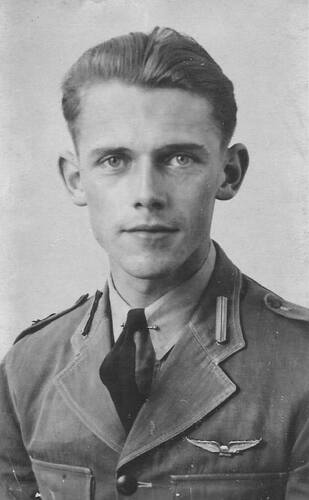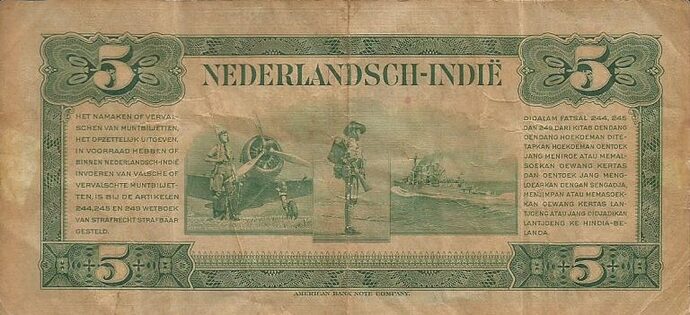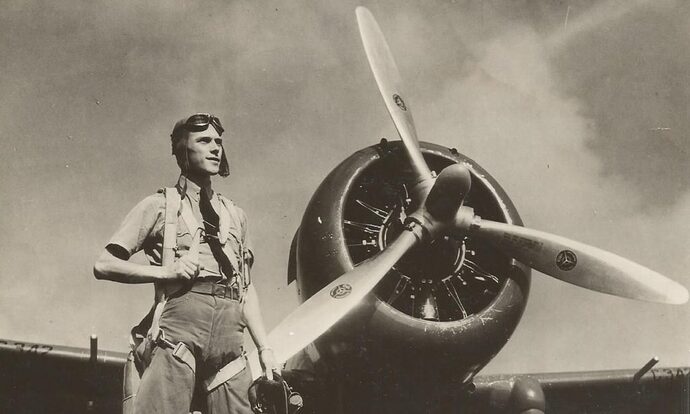Always a pleasure to see what you do HG - keep at it & thanks for sharing
Thank you… seriously! Thank you.
It’s astounding that you actually have to extend the flaps to make them fit. They aren’t even close! Jeeze. Not to mention how warped the parts were and what’s needed to flatten them out properly. Most people would just say, to hell with it, I’ll build this with the flaps closed, it’s hopeless. (At least I would. ![]() )
)
Truly fascinating to see this come together!
Thanks Brian! She’ll look great on your shelf. ![]()
HG I may be wrong but i think there shouldn’t be any shoulder harnesses, I know the p40 had just lap belts and the mohawk was produced before the p40.
Joe
To be considered and discussed!
Hi Joe,
Forgive the late reply, busy with home stuff. The feedback is fantastic. Just looking at the picture Brian sent, your astute eyes took the blanket off of mine. The issue I have is there were so many variants and home country modifications made. Ultimately it depends on the owner of the model. Please keep commenting though.
Going to add some detail to the flaps. Not just for the look, but to equally add strength.
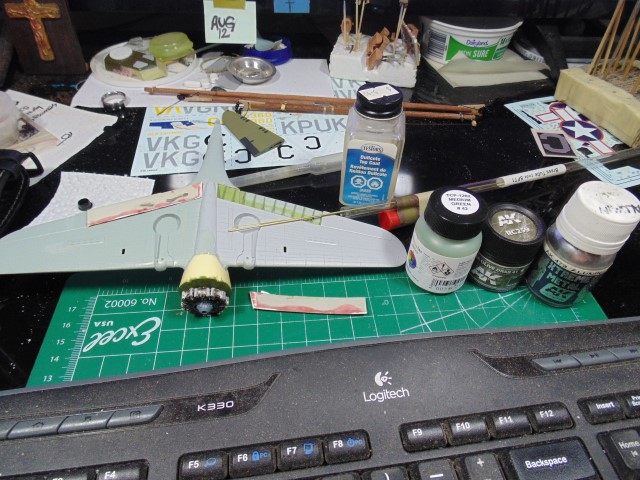
I have to thank Sunward Hobbies at https://www.sunwardhobbies.ca/ on this post because they sent the paint for another project which is perfect for this one. Please consider supporting a family owned and run hobby store.
More, when time permits. Thanks.
We probably should ditch the shoulder harnesses. If you are referring to the picture of C332 earlier, we can clearly see the pilot leaning well forward in the seat, without any sign of shoulder harnesses.
The absence of them was also a feature (not a bug) of early F4F-3 Wildcats till head impact with gunsights proved this was “not a good idea.”
Kinda reminds me of the time seatbelts were first installed in autos in the early 1960s – who knew that heads would still go through windshields with just lapbelts? ![]()
Well researched Gentlemen, the shoulder harnesses will be removed. They are there because the kit instructions say to add them. I’ll spare you the historical narrative of how Curtis murdered countless.

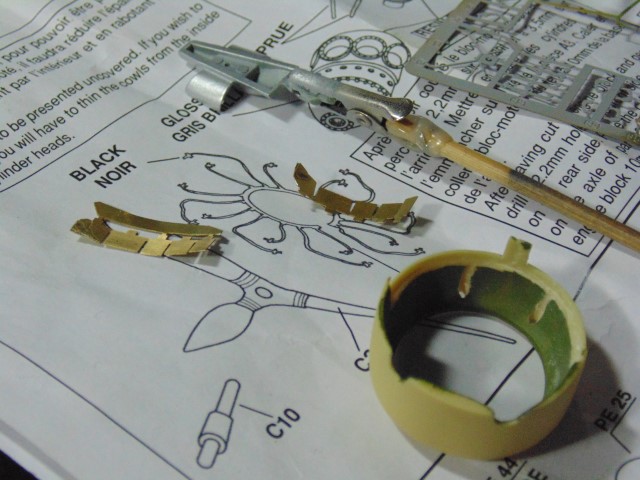
The resin needs work in order to fit the photo-etched cowl flaps connectors. Those flaps have to be sanded. On top of that you have to add triangular bits to the edge of the open cowls because they are mirrored (meaning not left and right).
Be well everyone and be careful what you get injected into your body.
Nobody’s injecting anything into me-lol
Great work so far.Can’t wait to see it finished.
Joe
Thanks Joe,
Might come off juvenile, but the kind words really really help. Much of the tedious stuff has been planned out. Thinning certain parts is next.
Kindly.
Hi Everyone,
Got a boost of energy on this one. Before I knew it 14 hours had passed…whoa!

Going to paint these a light tan fabric.

Still some interior work to do, but the green lens should look nice.
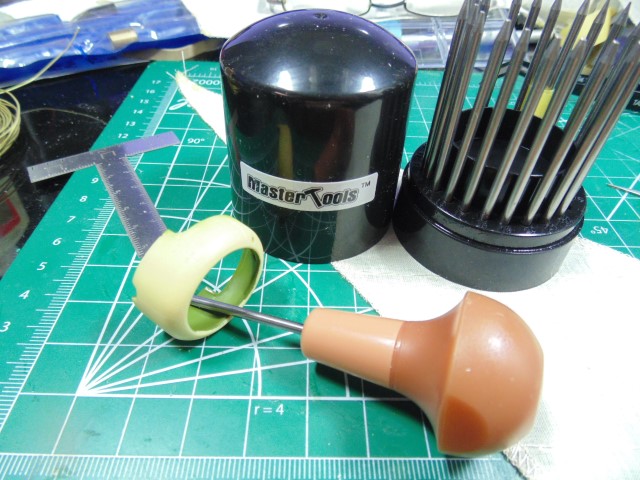
Using a rivet punch to make the cowl part connectors.
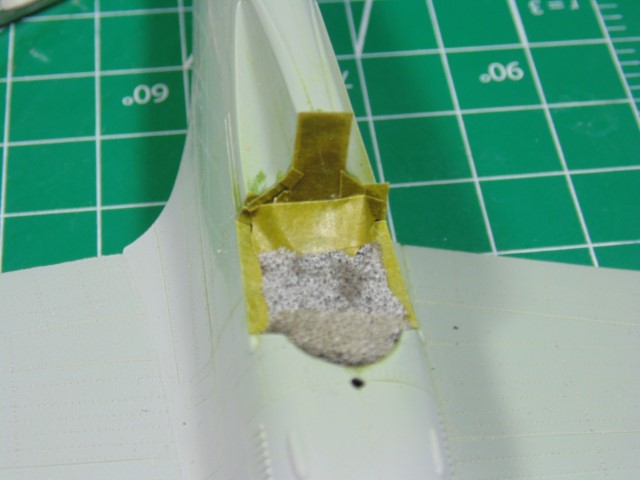
Much masking to do.

The belly is four colors.

Tru-Color paint Medium Green #42

While that dries I cored out and painted the exhaust tips.
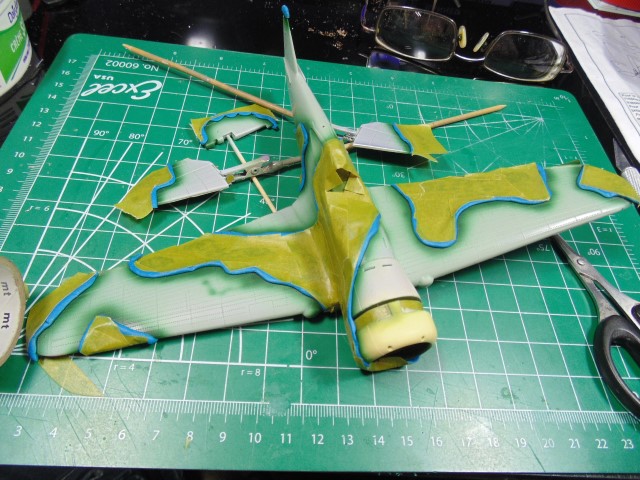
Loads of masking!!!
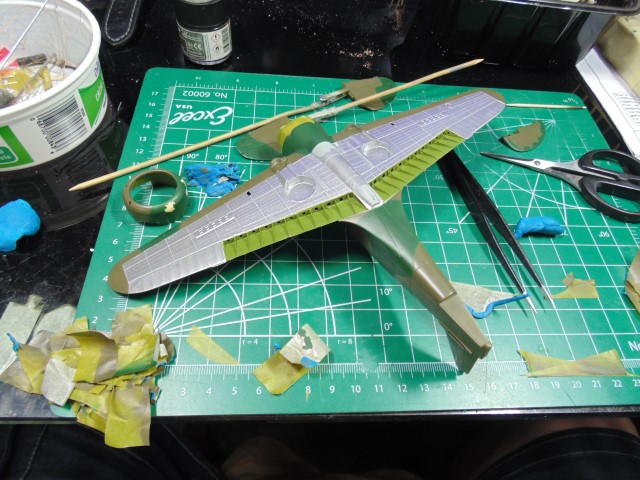
A few touch-ups needed here and there.

AK dark olive drab #41
Hope you didn’t mind the long post. Best of health.
The longer the better …
Wow. Super impressive. I like it all but especially:
-
How you removed and tidied up the pilot’s seat sans shoulder straps and the beautiful mating of the resin forward fuselage to the main fuselage. (Picture #2)
-
The masking of the lower wing (Picture #5)
-
The workmanship going into the gap between the fwd. fuselage and the cowling, where the cowling flaps will go.
-
The Zinc chromate flap locations, which look really good! (Picture #9) and
-
How the topside camo looks. (Picture #10)
It’s shaping up as a real work of art!
Thank you!
LL is on the bench getting a port side dull coat. While that flashed off I did some more Mohawk.

The afore mentioned touch-ups.
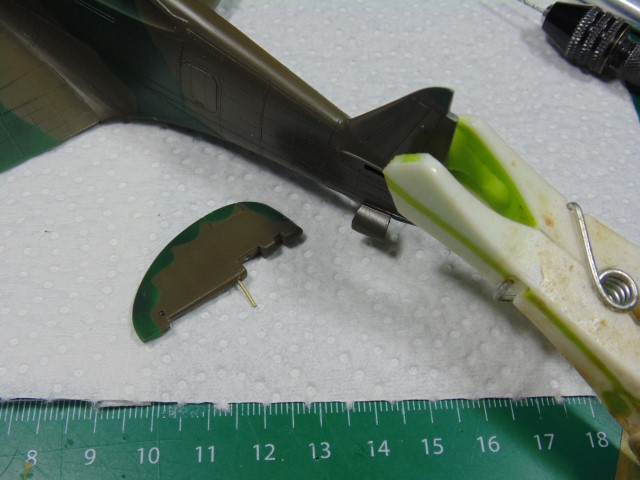
Reinforced the stab’s plastic and pinned the resin with epoxy.

Decals are few in number, yet some surgery is needed for the dropped flaps.
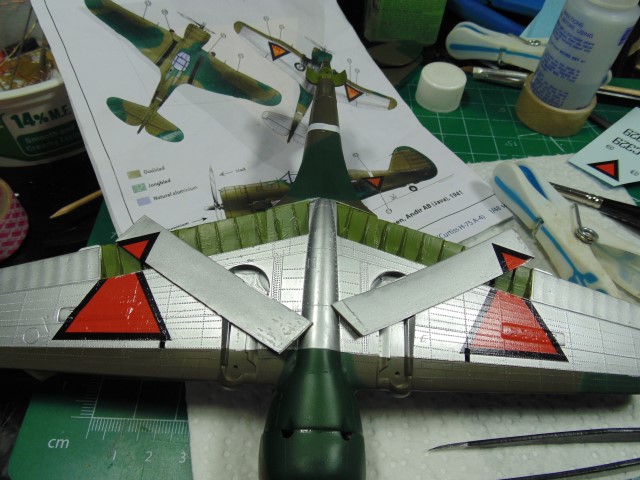
Say what you will about some parts of the kit, but the decals are great!
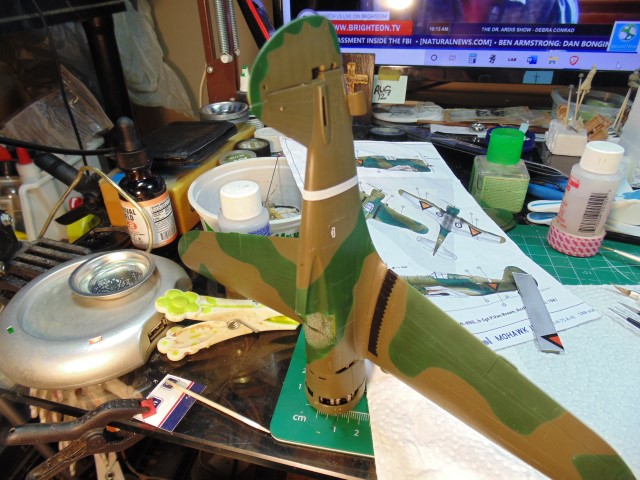
Front cowl and tail wheel parts added while a decal dried.

She’s ready for a gloss and then a dull coat, then just keep adding parts. Now back to the Lady. Thanks for following along guys.
The Fate of C329 and Its Pilot
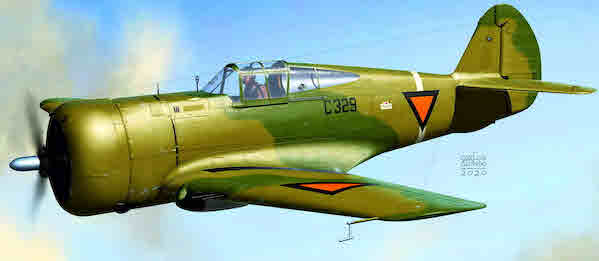
While H.G. continues work on the Dutch H-75A-7 “Hawk,” the latest build photos (look at the wing leading edge and fuselage) in H.G.'s post above confirm it’s going to be C329.
The history of this aircraft and its pilot is actually available online with a bit of searching. I’m surprised at how much I learned and have to share!
The full context requires some technical info about the A-7 variant, which is available here:
Curtiss 75A-7: Version for the Dutch East Indies with Wright R-1820 Cyclone 1200 hp; one .50 inch and one .303 inch machine gun in the nose and two .303 inch machine guns in the wings; later changed to two .303 inch machine guns in the nose; bomb load of 2 x 50 lbs (23 kg)
The bombs figure in the story. Further info about C329 is available at the same site. Many of the Dutch Hawks don’t have a disposition, but this one does. I’ve reformatted it below.
I’ve referenced this second site before, but it’s a must-read for this “Must-Have” model: The short, unhappy ML-KNIL career of the Curtiss 75A ‘Hawk’
This is pertinent.
A detachment of Hawks was deployed to Sumatra. According to some sources this detachment operated from Medan (Sumatra) where, in December 1941, two Hawks were lost in a mid-air collision while taking off to assist the threatened British forces in west-Malaya.
I’m getting warm. I wonder what will happen if I Google “Van Breen” and “Netherlands East Indies Air Force” (even if Torsten properly points out that it was actually called the KNIL = K oninglijke N ederlandse I ndische L uchtmacht" at the time!)
And, to my shocked surprise, this face looks me straight in the eyes.
The photo comes from a Facebook page, and gives what is probably the fullest account, beginning with his full name:
ML-KNIL Sergeant- pilot Paulus Casper van Breen
Sergeant-pilot Paul van Breen (Born on March 30, 1917 in Amsterdam
Deceased on December 21, 1941 in Medan) of the Military Aviation Authority of the KNIL was killed in December 1941 with a Curtiss Hawk in Medan, on Sumatra.Sergeant-pilot P.C. van Breen flew a Curtiss Hawk as part of the First Division Aircraft Group IV and was since 15 or December 16, 1941 stationed at airport Pakan Baru in Sumatra.
As of 20 December patrols activities would be on the road. Paul Breen would perform a bomb attack on a railway junction in Hat Yai near Sengor and explore some strategic objects on the route to it. When climbing after the start in the early morning of December 21, 1941, the planes of Van Breen and his colleague Sanders collapsed [collided?] and at Kwala to Pertjoe the two crashed down. When hitting the ground two entrained 50 kilograms of bombs exploded and both pilots were killed.
Sergeant - pilot P.C. van Breen is buried on Dutch Ereveld Leuwigajah in Cimahi, Java. His colleague Sanders rests on another cemetery, also on Java.
I doubt either pilot would have survived the crash even without the bombs exploding, but they clearly provided a coup de grâce.
Van Breen was certainly handsome, so much so that he was even photoed for a ML-KNIL recruiting poster in 1940!
I don’t think I need to add more. War exacts a terrible cost in lives.
Update!
Here’s a bit more information, including the remarkable fact that van Breen’s publicity image also appeared on Dutch Colonial currency.
Read this article, which is accessible via Google translate from the original Dutch. 74 years after his accident, the family sees Paul van Breens pocket knife again.
Also, H.G., take note of this blow-up of the publicity photo.
Note how the stbd cowling MG blast tube on this aircraft, C342, extends a bit farther out from the cowling than the port side one. Maybe this picture was taken before they swapped out the one .50 cal. MG in the cockpit for a .303. Anyway, I don’t think you need to reflect this on C329.
Returning to the pilot, we see a pattern often repeated among WWII families, Decades after the veteran’s death in the war, the memory of the decedent is passed from one generation to the next. There is some comfort in that, I think.
@Redhand, Great bit of background info!! Thanks for adding that on here. The machines alone have their own interest, but the men who crewed them add a whole different dimension.
Yes, indeed!
Thanks for the in depth research on the pilot of this aircraft, Brian! That’s one major aspect which makes our hobby so interesting. I also try to find out what happened to the pilot of my builds once I get his name.
Always good stuff from you Brian - the human interest adds another dimension.
